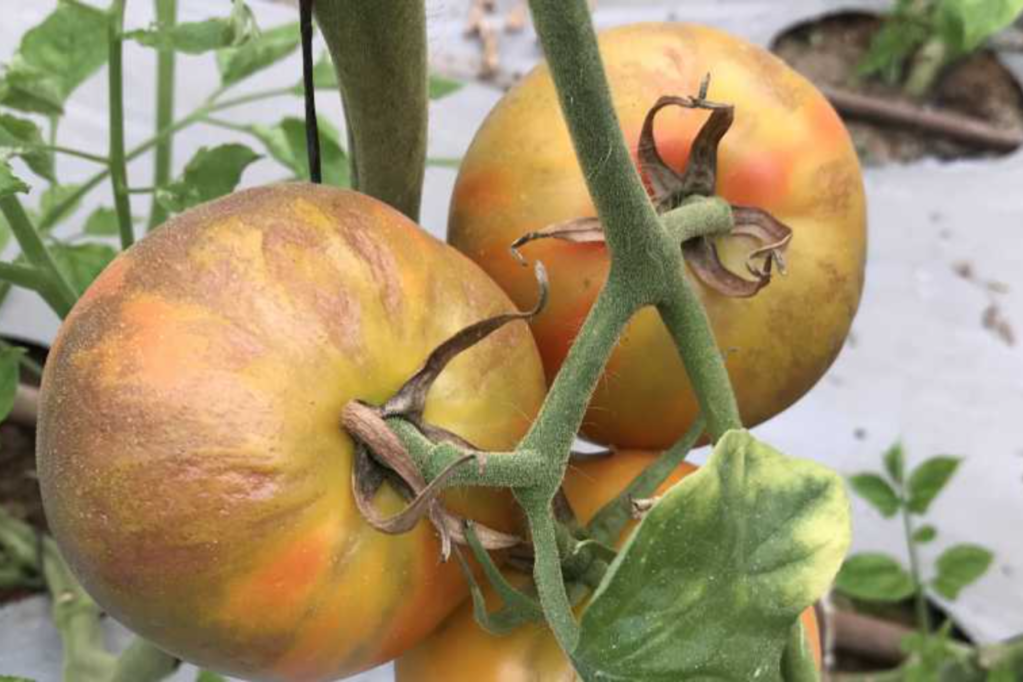Tomato virus spreads to third property
A third case of the contagious tomato virus which last week led to domestic and international bans on South Australian tomato exports has been detected.

The Department of Primary Industries and Regions (PIRSA) reported Australia’s first known cases of Tomato brown rugose fruit virus (ToBRFV) on August 19 at two northern Adelaide properties.
At that time, PIRSA said quarantine measures were underway, and more than a week later there had been no new cases, though Queensland, Western Australia and New Zealand all restricted South Australian tomato imports due to the virus.
PIRSA has now reported the virus has been detected at a third property which it said was linked to the two known sites through “the movement of plant material”.
The department also said three additional businesses were being followed up regarding infected seeds, saying PIRSA was “undertaking extensive tracing” to identify the infection’s source.
ToBRFV is a highly contagious exotic virus that affects tomatoes, capsicums and chillies, and is regarded as a “considerable threat” to Australia’s $5.8 billion vegetable industry. The virus impacts the yield and marketability of fruits, causing brown wrinkled spots, deformations and uneven ripening.
PIRSA reported more than 2000 plant samples had been taken from over 18 businesses as of September 3, with 84 greenhouses sampled.
You might like
The department said it had determined some other states may have received potentially infected seeds, saying those jurisdictions had been informed and were carrying out their own testing.
The new detection comes after Queensland’s Department of Agriculture and Fisheries announced a movement control order notice on August 23, restricting tomatoes and any other known carriers of ToBRFV from entering the state from any state or territory with a confirmed detection of the virus.
The order will remain in place for three months “unless earlier revoked”.
Western Australia introduced import measures only on tomatoes from properties where ToBRFV had been detected.
On August 22, New Zealand banned tomato imports from all Australian states other than Queensland, where Biosecurity New Zealand deputy director-general Stuart Anderson said the country gets all of its Australian-imported tomatoes.
On August 23, it announced a suspension of all Australian tomato imports.
Stay informed, daily
The ban was reviewed on August 30, and Anderson confirmed in a statement to InDaily that the ban remains in place.
“The suspension will remain in place until we have confidence in the distribution of the virus in Australia, confirmed by outcomes of the tracing and testing,” Anderson said.
“We’re in close contact with our counterparts in Australia about what they’ve found and the measures they are taking. We’ll continue to monitor the situation closely.
“While New Zealand only imports Australian tomatoes from Queensland, an area free from this virus, we made the decision to suspend imports from all Australian states out of an abundance of caution.”
In a statement provided to InDaily last week, a spokesperson for the NSW Department of Primary Industries and Regional Development said regulatory measures to control the virus “must be scientifically based and commensurate with risk while not posing undue burden on business continuity for our $109 million tomato industry”.
“Through nationally agreed response management governance structures impacted stakeholders (including industry) are working to deliver a risk assessment for this disease by 13th September,” the spokesperson said.
“NSW will review the outcomes of this risk assessment to decide if further regulatory action is required. This may include border restrictions if the risk warrants this measure.”
Speaking to InDaily last week, Jordan Brooke-Barnett, the CEO of South Australia’s representative body for vegetable industries, AUSVEG SA, said the import bans were “a concern”.
“Our industry, as with any horticulture industry, relies pretty heavily on interstate trade,” Brooke-Barnett said.
“We’re really gearing up for production in October, so we’re hopeful that once the tracing is done we will have a way forward for how we can actually trade past interstate boundaries.”








